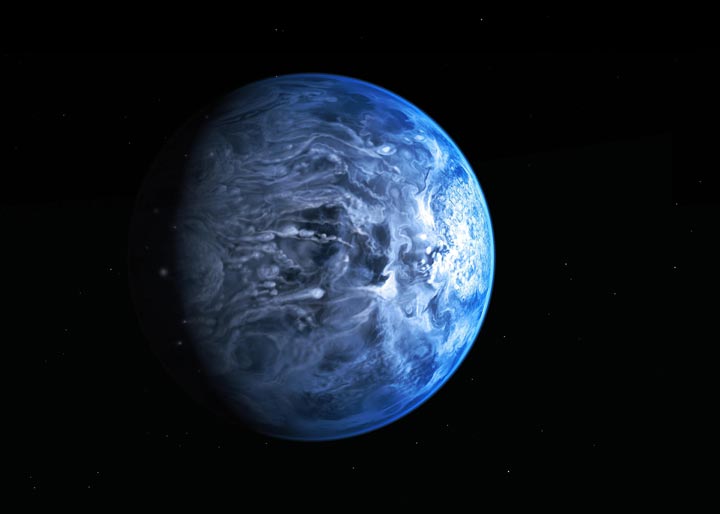LOS ANGELES – Peering into the far reaches of the solar system, astronomers have spied a pink frozen world 12 billion kilometres from the sun.

It’s the second such object to be discovered in a region of space beyond Pluto long considered a celestial wasteland. Until now, the lone known resident in this part of the solar system was an oddball dwarf planet spotted in 2003 named Sedna after the mythological Inuit goddess who created the sea creatures of the Arctic.
The latest discovery shows “Sedna is not a freak. We can have confidence that there is a new population to explore,” Yale University senior research scientist David Rabinowitz said in an email. He was one of Sedna’s founders, but had no role in the new find detailed in Thursday’s issue of the journal Nature.
For years, astronomers hunted in vain for other Sednas in the little-studied fringes of the solar system.
READ MORE: 16×9: The search for life on other planets
The new object, 2012 VP113, was tracked using a new camera on a ground telescope in Chile by Scott Sheppard of the Carnegie Institution for Science in Washington, D.C., and Chad Trujillo of the Gemini Observatory in Hawaii. Trujillo was part of the team that found Sedna.
Like Sedna, VP is also a dwarf planet. It’s jokingly nicknamed “Biden” after Vice-President Joe Biden because of the object’s initials. It measures about 280 miles (450 kilometres) across, or half the diameter of Sedna.
- 2021 heat dome fuelled by climate change, intensified wildfire risk: study
- B.C. introduces legislation recognizing Haida Gwaii Indigenous title
- Whale experts confident B.C. orca calf will survive, find family if rescue plan succeeds
- Chemical plant shuts down after high benzene levels detected near Ontario First Nation
Unlike red and shiny Sedna, the newfound object is more pink and much fainter, which made it hard to detect.
By contrast, Earth is about 12,713 kilometres across and located 149.66 million kilometres from the sun.
Sedna and VP reside in what’s known as the inner Oort cloud in the outer edge of the solar system where some comets such as the sun-diving Comet ISON are thought to originate. ISON broke apart last year after brushing too close to the sun.
READ MORE: NASA announces 715 newly discovered planets
“Finding Sedna so far away seemed odd and potentially a fluke. But this one is beginning to make it look like that might be a typical place for objects to be. Not at all what I would have guessed,” Mike Brown, an astronomer at the California Institute of Technology, said in an email.
Brown led the Sedna team, but was not part of the new discovery.
Far from being deserted, Sheppard and Trujillo estimate there are probably thousands of similar objects in the inner Oort cloud.
“These objects are not unique. There’s a huge number out there,” Sheppard said.
Not all of them will be visible to telescopes because they’re so far away and it takes a long time for them to swing by the sun. Sedna and VP were spotted at their closest approach to the sun, which allowed light from the sun to hit the objects and bounce back to observatories on Earth.
VP is currently the third farthest object in the solar system after dwarf planet Eris and Sedna, but it has an eccentric, elongated orbit that can take it out to 67.6 million kilometres from the sun. Sedna can loop out as far as (135 million kilometres from the sun at its farthest point.
Now that Sedna has company – and likely lots of them – scientists are searching for more objects in an effort to learn how they and the solar system formed and evolved.
In a separate discovery published in Nature, a team led by Felipe Braga-Ribas of the National Observatory in Brazil found a pair of rings around an asteroid-like interloper in the outer system named Chariklo.
While not as dazzling as Saturn’s rings, it’s the first time rings have been discovered outside of the four gas giants – Jupiter, Saturn, Uranus and Neptune. How little Chariklo got its rings remains a mystery, but scientists think they may have formed from debris from a violent collision.




Comments